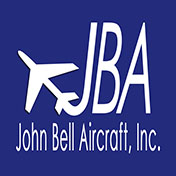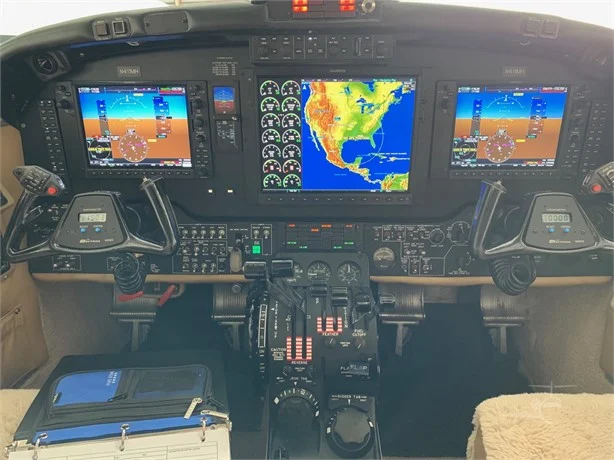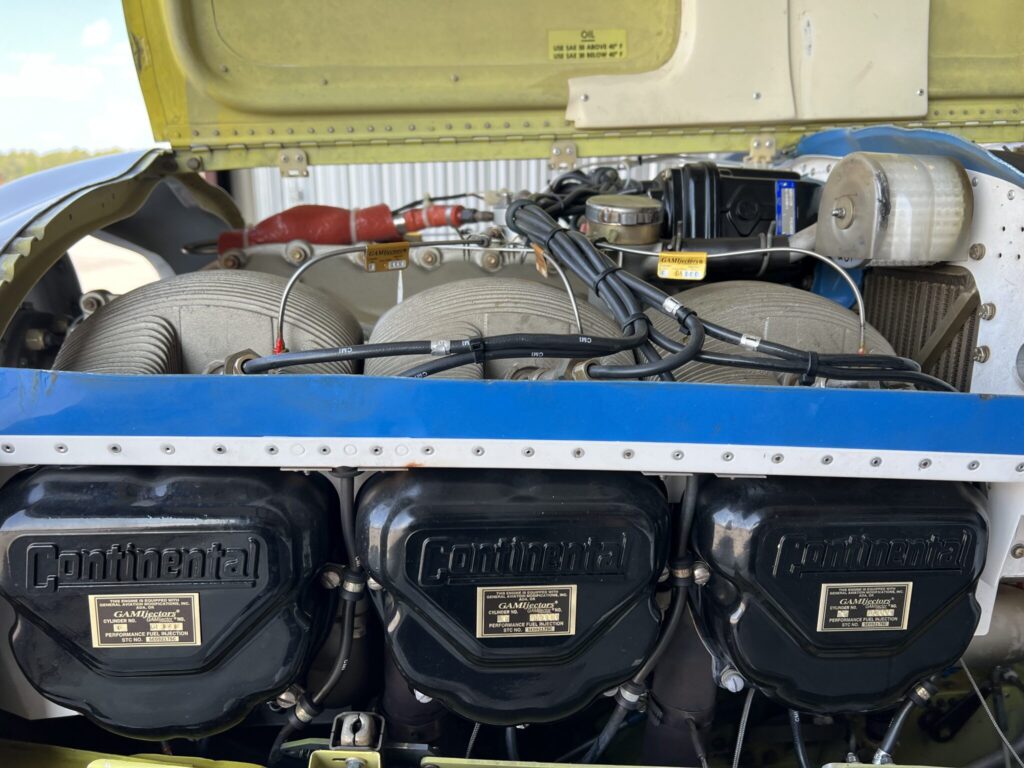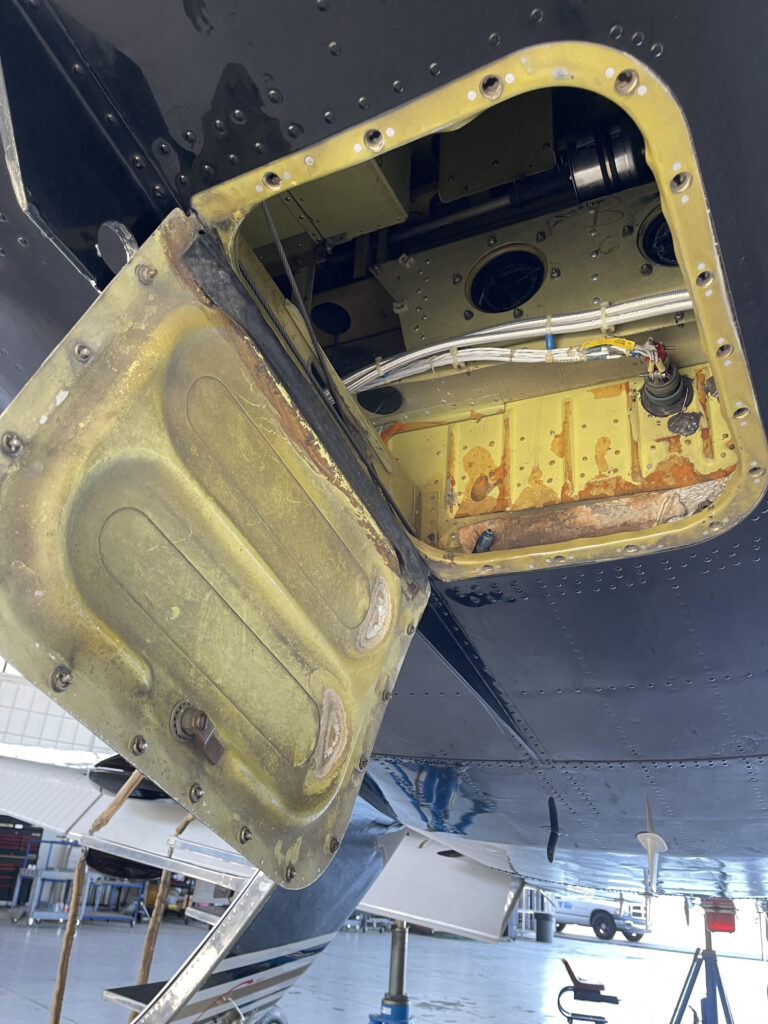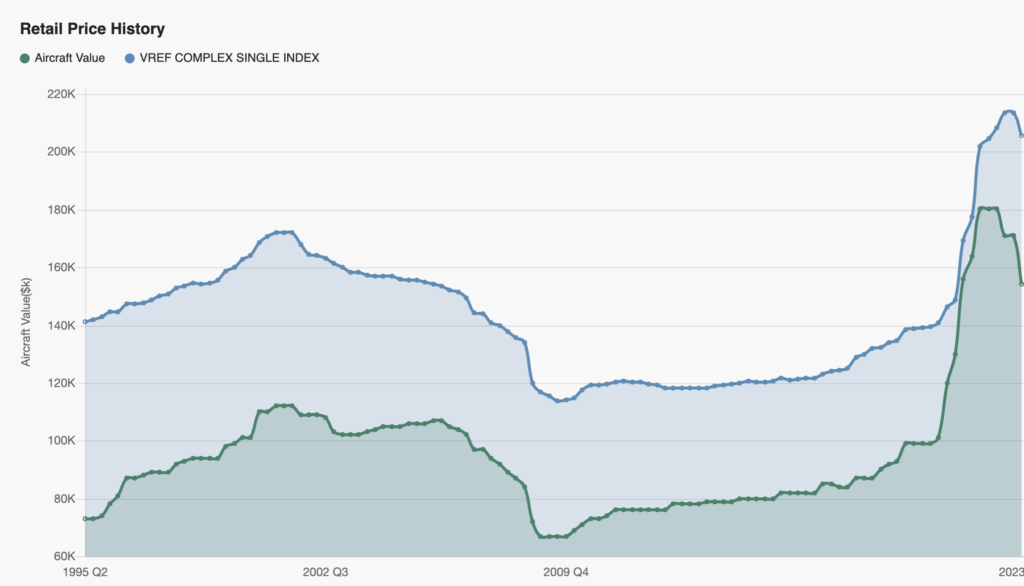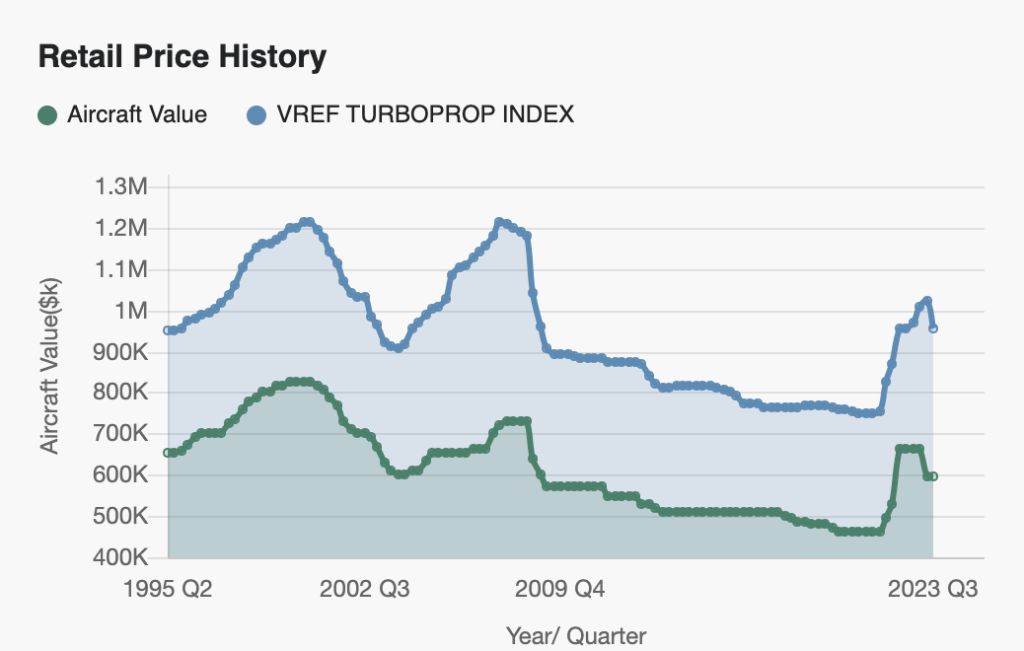Clients nationwide have trusted the expertise of JBA for over 50 years. Read John’s in-depth article on ‘How to buy and sell used aircraft’.

HOW TO BUY AND SELL USED AIRCRAFT
Analyze Your Needs
Impulsivity is one of the most common mistakes in purchasing a used aircraft. Buying an aircraft without fully considering the effects of your decision can be costly. You should take the time to analyze your requirements carefully and be realistic. Consider your typical flight load, trip distance and conditions of flight, and then compare aircraft. To avoid the trap of buying more than you need or can use, ask yourself if you really need all the fancy bells and whistles. If possible, go rent or lease the particular aircraft make and model you are interested in. This allows you to get a feel for how well it meets your requirements.
Insurance
Find a good insurance company and discuss your plans. Be sure you are buying an airplane that you can get insured to fly without too much trouble. The insurance company may require you to have more hours in make and model. You need to know this up front, so you can get the experience or choose a different make / model. Often times, you may qualify for insurance after you meet a minimum requirement such as five hours of instruction in a similar make and model. By knowing these things ahead of time, you can be one step ahead of the game.
Financing
GET FINANCING APPROVAL EARLY IN THE PROCESS. The reason for this is simple: the ability to act quickly. Whether buying new or used, it’s important to know what you can afford and what the bank will lend you (assuming you’re getting a loan for the purchase). There are many aircraft lenders that can pre-approve you over the phone in as little as fifteen minutes, or you can apply online. Once you have been pre-approved, you are under no obligation to use the loan; it will just be there for you if and when you need it. This will allow you to concentrate on finding the right aircraft, and enable you to immediately make an offer when you do find it. A great buy can slip through your fingers if another buyer comes along while you’re busy trying to find financing.
Factors that affect Aircraft Value
OBTAIN THE MOST INFORMATION POSSIBLE BEFORE GOING TO SEE AN AIRPLANE. The following will be questions to ask your seller:
Engine hours
This will be a major factor on resale value of your aircraft. The closer an engine is to its recommended time between overhaul (TBO), the less its value. Equally important is a record of consistent use coupled with a good maintenance program. Regular use helps keep seals and other engine components lubricated and in good shape.
Overhauls
Be careful of the terminology used to describe engine condition. A top overhaul involves the repair of engine components outside of the crankcase. A major overhaul involves the complete disassembly, inspection, repair and reassembly of an engine to specified limits. If an engine has had a top or major overhaul, the logbooks must still show the total time on the engine, if known, and its prior maintenance history.
Installed equipment
such as avionics, air conditioning, deicing gear and interior equipment. The big item here is usually avionics that can easily double the value of some older aircraft. Also, older equipment is generally more expensive to maintain.
Airworthiness Directives
ADs are issued by the FAA for safety reasons and are a fact of life for most every aircraft. Once issued, owners are required to comply with the AD within the time period allotted. It’s important to look at the AD history of an aircraft. Check the nature of the ADs and whether they are recurring or one-time compliance. Make sure the logbooks show compliance with all applicable ADs. You can search for ADs on AOPA’s Web site or you can have a list prepared by Aircraft Title and Escrow Service.
Damage history
major repairs can affect the value of an aircraft significantly, but may be hard to pin down. A damage history will decrease the value of an aircraft, depending on the type of accident, nature of the damage and the degree to which major components have been involved. Any aircraft with a damage history should be closely scrutinized to make sure it has been properly repaired in accordance with the applicable FAA regulations and recommended practices.
Paint/interior
Check new paint jobs carefully for evidence of corrosion under the surface. Interior items should be checked for proper fit and condition. Done properly, both items enhance the value of the aircraft. Be sure to inspect the aircraft wing surfaces for hail damage which can severely affect your resale value.
Pre-Purchase Inspection
Before buying, have a mechanic you trust give the aircraft a thorough inspection and provide you with a written report of its condition. Choose a knowledgeable individual who has no fiscal interest in the airplane or selling you any other airplane!
A pre-purchase inspection should include a thorough mechanical inspection of the aircraft, an inspection of the aircraft log books and other records such as FAA Form 337 (Report of Major Repair or Alteration) and AD compliance. Ideally, the mechanic you select to do the inspection should have experience and be familiar with the problems that may be encountered on that type of aircraft.
A pre-purchase inspection is not an annual inspection, although the buyer and seller could agree to such an arrangement. It is very important to insist on inspecting the ‘deal breaking’ items first, as the aircraft may be found to be un-airworthy and be grounded. IMPORTANT: Be very careful to specify to the shop or mechanic performing the inspection that the ‘pre-purchase’ inspection will come BEFORE the annual inspection!
Poor annual inspections or improper repairs could cost a new owner thousands of dollars if not more. Be aware that 100-hour inspections are not annual inspections. It indicates only that the aircraft was found to be in airworthy condition at the time of inspection.
Other important items to inspect for are:
Corrosion
One of the main worries of buying a conventional airplane these days is the specter of widespread corrosion. Check the logbooks to see where the airplane has lived most of its life. Many entries from coastal cities should tip you off to be extra cautious of corrosion. Also look for recent and consistent call-outs for corrosion protection. Treatment with products like ACF-50 and Corrosion X have been successful in stemming the spread of corrosion in even beach-bound airplanes, but they cannot replace metal that’s already gone. So look carefully.
Weak engine
If you find an engine that supposedly has low time since new or overhaul but has low compression, high oil consumption, or many contaminants in the oil filter, look out. (As part of your prepurchase inspection, you should take hot and cold compression readings and a peek inside the oil filter element.) You could be dealing with either a bad overhaul, a non-overhaul (a paint and paperwork exercise), or poor maintenance. A low-time engine should look, run, and smell like a low-time engine. Be on guard for parts-bin engines, as well; you might run across a powerplant with two chrome cylinders, two steel, and two of indeterminate origin. To be conservative, in this case you should budget for a complete top-end overhaul.
Uncommonly low time
Inactivity is the bane of all aircraft, so be cautious of the glowing praise from the seller of a 500-hour-since-new 1956 (or even 1976) airplane. It’s far better to have higher total time and a history of constant and frequent use than a so-called cream puff that was flown only to get a $100 hamburger on every third Sunday.
Undocumented or poor damage repair
It’s said that there are two types of retractables, those that have landed gear-up and those that will. Look at both the logs and the airframe for evidence of skin patches, structural-member replacement, or mysterious “flaps replaced this date” entries. Properly fixed and documented repair notes hurt the price less than the sneaky “don’t ask, don’t tell” types.
Obviously, the outcome of a pre-purchase inspection is likely to affect price. If a mechanic discovers a serious problem, the buyer is not likely to close the deal without a reduction in price equal to the cost of the repair. For that reason, the seller may be wary of such an inspection. Nevertheless, it is to the buyer’s advantage to insist upon one. Once the deal is closed and the buyer takes possession of the aircraft, it will be extremely difficult to force the previous owner to bear the cost of repairs that should have been performed before the sale.
Transfer of Ownership
Sales Contract
Once you have decided to buy a particular aircraft, put the terms and conditions of the agreement in writing. This is for the protection of both parties since it is often difficult to enforce verbal contracts. The agreement need not be complicated, but it should clearly state the intentions of the both parties. Each state has different laws which will govern the interpretation of your agreement, so be sure to specify which state will have jurisdiction.
Title Searches
A clear title is a term commonly used by aircraft title search companies to indicate there are no liens (chattel mortgage, security agreement, tax lien, artisan lien, etc.) in the FAA aircraft records. The Civil Aviation Registry does not perform title searches for the aviation public; however, the aircraft records contain all of the ownership and security documents that have been filed with the FAA.
The Civil Aviation Registry records acceptable security instruments. In addition, some states authorize artisan liens (mechanic liens) and these may also be recorded. Check your state’s statutes. Federal liens against an owner (IRS, drug, repossession, etc.) may not show at all!
Have a title search done by an attorney or qualified aircraft title search company. A list of title search companies qualified in aircraft title and records search can be found on AC Form 8050-55, Title Search Companies, available from the Civil Aviation Registry.
You wouldn’t think of purchasing a house until you have the records examined. You should do the same when purchasing an aircraft, which also represents a substantial investment. Even though you are planning to purchase the aircraft from an established dealer, it makes good sense to determine the true status of the aircraft records before you buy.
Aircraft records maintained by the FAA are on file at the Mike Monroney Aeronautical Center. Microfiche copies of aircraft records maybe requested for review. For more information on how to order and costs, contact the Civil Aviation Registry at (405) 954-3116. There may be other records filed at federal, state, or local level that are not recorded with the FAA.
Cape Town International Registry
As adopted in the United States by The Cape Town Treaty Implementation Act of 2004 – August 9, 2004 which:
- Recognizes the International Registry as an additional place for the filing of interests, including prospective interests, in certain airframes, helicopters, and aircraft engines.
- Establishes the right for owners of these aircraft to grant an Irrevocable De-Registration and Export Request Authorization (IDERA) to a secured party.
- Reduces from 750 to 550 rated take-off shaft horsepower the size threshold for aircraft engines eligible to be recorded as collateral in security instruments.
- Establishes the Civil Aviation Registry as the Authorizing Entry Point.
The effective date of these changes is March 1, 2006.
Aircraft and Aircraft Engines Eligible for International Registry Recording:
- Airframes that are type certificated to transport:
- At least eight (8) persons including crew; or
- Goods in excess of 2750 kilograms (6050 pounds)
- Helicopters that are type certificated to transport:
- At least five (5) persons including crew; or
- Goods in excess of 450 kilograms (990 pounds)
- Jet propulsion aircraft engines with at least 1750 pounds of thrust or its equivalent.
- Turbine-powered or Piston-powered aircraft engines with at least 550 rated take-off horsepower or its equivalent.
The text of the Cape Town Treaty and the Protocol on Matters Specific to Aircraft Equipment are available at http://www.unidroit.org/english/conventions/mobile-equipment/main.htm
The IR, as it is commonly referred to, adds a great deal of complication to a transaction. Remember that just because one party doesn’t want to use the IR, that doesn’t mean you shouldn’t. Also don’t just believe what someone tells you about it, make sure you get advise from people with real experience. Call us if you have questions about the IR, or why you should use us on your IR closing.
Escrow
Aviation closings are unique in many aspects. No one closing is the same as the next. Whether the plane be brand new, or thirty years old each one is worthy of going through escrow, as escrow can afford protection and simplicity to all parties involved.
Buyers
Your money stays with an informed neutral party, and you are assured clear title of the aircraft. The paying of liens and filing of the Bill of Sale will be done by the escrow company and transfer of ownership will occur very quickly with their desk at the FAA. The documents will be correct the first time, so you won’t get a reject from the FAA and have to re-file or correct mistakes. If your aircraft is eligible for the IR it makes near necessary to close with an escrow company. Ultimately the cost is minimal, and the protection immeasurable.
Sellers
When your funds come to an escrow company, the escrow company will ensure they are clear and safe to use. If your aircraft has a lien on it, then the escrow company will take care of getting the release and ensuring title is cleared upon the sale. The transfer of ownership documents will get filed immediately and you don’t be responsible if the aircraft is involved in an accident or illicit activities.
Bill of Sale
The first item to fill in is the price of the aircraft, where it says “For and in consideration of $___” To preserve he confidentiality of the transaction, the FAA will accept the phrase “$1 & OVC” (Other Valuable Considerations) in this spot, and most Bills of Sale are filled out in this fashion.
First, make sure the seller signs the Bill of Sale in exactly the same manner as is shown on your title search. Omitting a middle initial, for example, is not acceptable to the FAA, and can lead to title problems when you go to resell.
In the section for the buyers name/address, take care to see that you use the same name and title that you will be using for the registration. Under “title”, a private individual will use “owner”, while corporate purchasers will use “President” or other appropriate corporate title. Use caution here if you have a partner: the titles “partner” and “co-owner” mean very different things, and an uninformed buyer may unintentionally give his partner the right to sell the aircraft without his knowledge!
Once the seller has provided you with a Bill of Sale and all applicable lien release(s), and you have provided him with certified funds, the sale is complete. Your responsibility is to file the Bill of Sale according to the instructions on the form, along with the lien release(s). If you are financing the aircraft, this paperwork will be handled by your bank.
CAUTION- If you or the sellers bank fail to file the lien release, the FAA will still accept you as the new registered owner, but the lien will remain on file against your aircraft!
Aircraft Registration
Obtain form AC 8050-1, “Aircraft Registration Application”, from the FAA, and complete it according to the attached instructions. Retain the pink copy and place it in the airplane: it will serve as a temporary registration until you receive the permanent one in the mail.
Individual, Partnership or Incorporation
There are a lot of ways to register your aircraft. While simple individual ownership or partnerships are the most common ways to hold title to an airplane, there are alternatives. You may wish to place the airplane in a limited liability partnership or a corporation, which offers the owners some measure of protection from liability.
Corporate ownership of an airplane has one main advantage — it shields the principals from liability. I suggest a corporation which is set up to run the airplane business. You can be the sole shareholder, CEO, and only employee. The company is responsible for maintaining the airplane and paying for expenses incurred in its operation. Similarly, you are expected to pay the corporation for use of the airplane. It’s important to understand that you must be extremely careful in structuring the corporation and be certain that the entity has its own books — including credit cards and bank accounts — separate from your own. You must also abide by the myriad other legal and procedural requirements of a corporation, including shareholder meetings and payment of incorporation fees. You may also be required to file quarterly estimated taxes.
Incorporating as a Subchapter S Corporation, a very flexible type of incorporation, will allow many tax advantages. It will allow the shareholders to be taxed as though in a partnership, rather than in the sometimes-higher corporate tax bracket.
It is excellent advice to seek counsel before making the final decision on incorporation for your airplane purchase. Corporate rules vary by state, and it’s in your best interests to have a local expert do the legwork for you.
Insurance
You should also have pre-arranged insurance for your new aircraft. This should be activated by phone or fax the moment that the Bill of Sale is signed.
Aircraft Documentation
- Bill of sale, sales contract, and/or release of lien
- Either FAA Form 8100-2, Standard Airworthiness Certificate, or FAA Form 8130-7, Special Airworthiness Certificate.
- Log Books and Maintenance records containing the following information:
- The total time in service of the airframe, each engine, and each propeller;
- The current status of life limited parts of each airframe, engine, propeller, rotor, and appliance (s);
- The time since last overhaul of all items installed on the aircraft that are required to be overhauled on a specified time basis;
- The identification of the current inspection status of the aircraft, including the time since the last inspections required by the inspection program under which the aircraft and its appliances are maintained;
- The current status of applicable Airworthiness Directives (AD) including, for each, the method of compliance, the AD number, and revision date. If the AD involves recurring action, the time and date when the next action is required; and
- A copy of current major alteration to each airframe, engine, propeller, rotor, and appliance.
- Equipment list, and weight and balance data.
- Airplane Flight Manual or operating Limitations.
Don’t get emotional about the purchase. There are no steals — if it looks too good to be true, it probably is!
